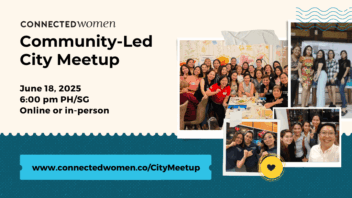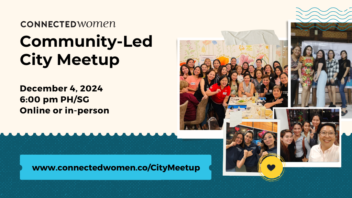Feeling Taxed By Tax?
 Contributed by
Shiyun Lim
June 12, 2016
Contributed by
Shiyun Lim
June 12, 2016

The deadline for e-filing tax will come around again before we know it. For most regular Singapore tax payers the exercise seems quite simple, as most of the compulsory declarations have already been captured by the IRAS system. As good citizens, we should be happy to pay our dues, but no-one wishes to pay more than they have to. Are you making good use of all the legitimate tax breaks?
Here is a re-cap of seven useful tax-saving methods:
1. Contribute To SRS (Supplementary Retirement Scheme)
The Supplementary Retirement Scheme is a voluntary scheme that encourages individuals to make more long-term investments for retirement. For citizens and permanent residents, the allowable maximum contribution for this year has been increased from $12,750 to $15,300. This item often accounts for one of the largest discretionary tax breaks for savvy taxpayers.
You do not get the CPF interest rate. Neither can you use it to buy a property or service a home loan. This scheme becomes more attractive as you get older as the “lock-in” period becomes relatively shorter. You would most likely be in a higher tax bracket, have acquired a range of assets and be comfortable with tying down a part of your money for 10 to 25 years.
Your SRS bank only pays you their measly savings account rate on any uninvested cash in your account. Therefore, it is not wise to leave cash idle in your SRS account for long periods of time. As you can invest your SRS money in a wide range of pre-approved investment products, and as the amount and timing of contributions are completely at your discretion, this account is particularly suitable for one-off investments, such as the AIA Asset Growth.
2. Make A Charitable Donation
Donations made to any approved charity are not just tax-deductible – you can enjoy a substantial tax deduction of 2.5 times of the amount donated. Therefore, if you make a $4,000 donation, you can claim a tax deduction of $10,000.
Cents & Sensibility is a strong supporter of contributing to society. We are a partner of the B1G1 Business for Good initiative. Causes we personally support include:
- The Bone Marrow Donor Programme (offering hope to patients with leukaemia and blood-related diseases)
- The New Charis Mission (started with helping ex-drug offenders and ex-criminals reintegrate into society and has expanded to reach out to youths at risk)
- “Aidha” (helping foreign domestic workers and lower-income women acquire useful skills and be smarter in financial matters)
3. CPF Top-Ups
If you already give money to your non-working spouse, parents or handicapped siblings why not give some to them via their CPF accounts and enjoy tax savings on top of it. Elderly recipients are able to withdraw your top-ups, so they can minimise the time lapse from your top-up to the time of withdrawal. As individual circumstances vary, it is best to refer to the details of the CPF top-up scheme.
Those who are self-employed or working as freelancers should try their best to make voluntary contributions to their own CPF Ordinary Account to gain more income tax deductions. This comes in handy if you’re servicing a housing loan.
4. Parent/Grandparent Reliefs
If you support parents, grandparents or great-grandparents, you will be entitled to income tax reliefs. The details vary depending on factors such as their own income levels, where they are living, whether they are handicapped and whether your siblings are also supporting them. If you are a working mum with children, you are also given tax incentives to rope in one of their grandparents or great-grandparents (in-laws included) to help care for them.
Reliefs are also available for supporting handicapped siblings (in-laws included). From YA 2015, the relief has been increased from $3,500 per year to $5,500, so it is always useful to regularly check the details.
5. Child Reliefs
Which tax payer would not know about Child Reliefs? But when both husband and wife are working, it would be useful to understand the details, as some reliefs can be claimed or shared by either parent, and some are only claimable by the mother. Each relief is treated separately. Therefore, if the mother claims Working Mother’s Child Relief (WMCR), she can still let her husband claim Qualifying Child Relief (QCR) if his tax bracket is higher.
Similarly, while in a particular year it may be better off for the husband to claim QCR, it may not be so in another year. Nowadays, annual taxable incomes do fluctuate due to events such as layoffs, uncertain year-end bonuses, vesting of stock options and overseas postings. So feel free to change the default claimant auto-generated by the e-filing program, as it is based on who made the claim the previous year.
By the way, working married women should always remember to claim the Foreign Maid Levy (FML) Relief if a maid has been engaged for her household, regardless of who pays the levy.
6. Course Fees
Singapore is big on life-long learning; IRAS will give you Course Fees Tax Relief for upgrading your skills and enhancing your employability. If you took several courses, you can claim for all of them, capped at a maximum of $5,500 per year for the actual fees you personally incur, such as aptitude test fees (for computer courses), examination fees, registration or enrollment fees and tuition fees. So, if you are studying part time for your Masters, consider spreading out your course fees payment over different years, so that you can claim the maximum $5,500 per year.
7. Insurance Relief
This is applicable only if your total compulsory employee CPF contribution or self-employed Medisave/Voluntary CPF contribution or both in 2015 is less than $5,000. This excludes most wage earners, but is relevant to some retirees, self-employed and freelancers (see Life Insurance Relief).
So there you – a recap of seven useful tax-saving ideas. Happy e-filing!
Visit Cents & Sensibility page to find out more about Shiyun’s work.











Sorry, the comment form is closed at this time.